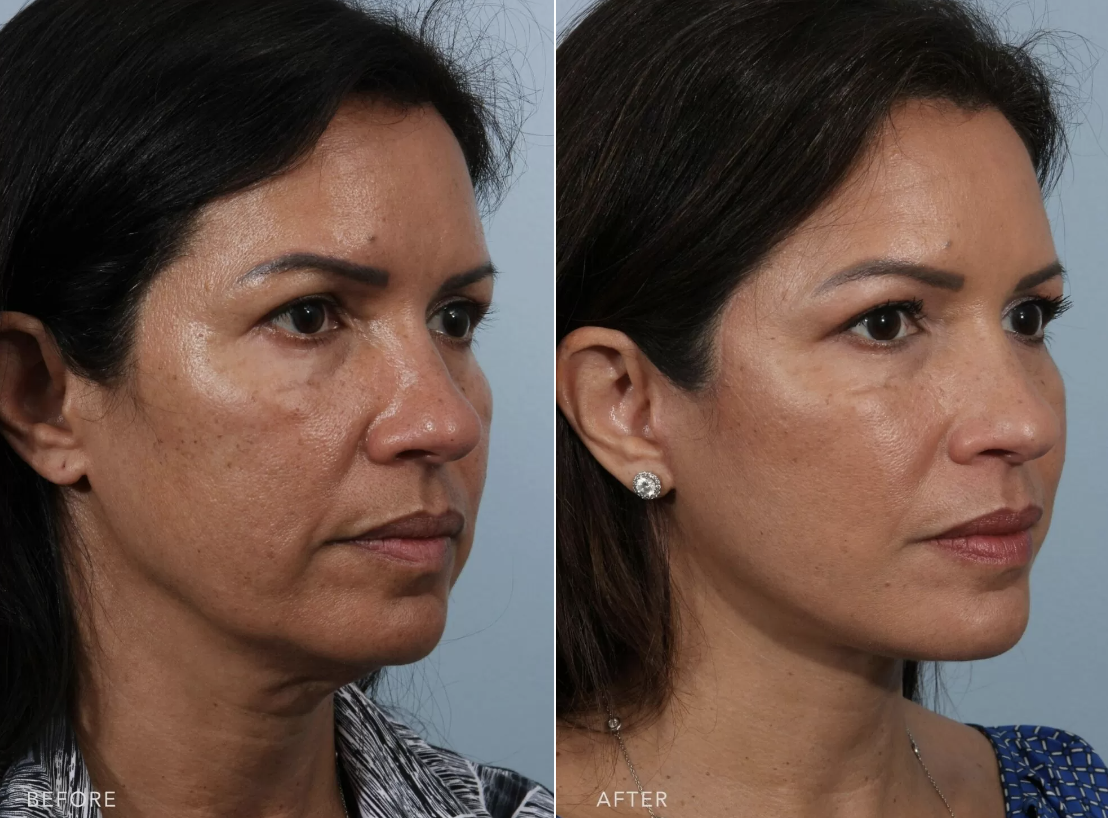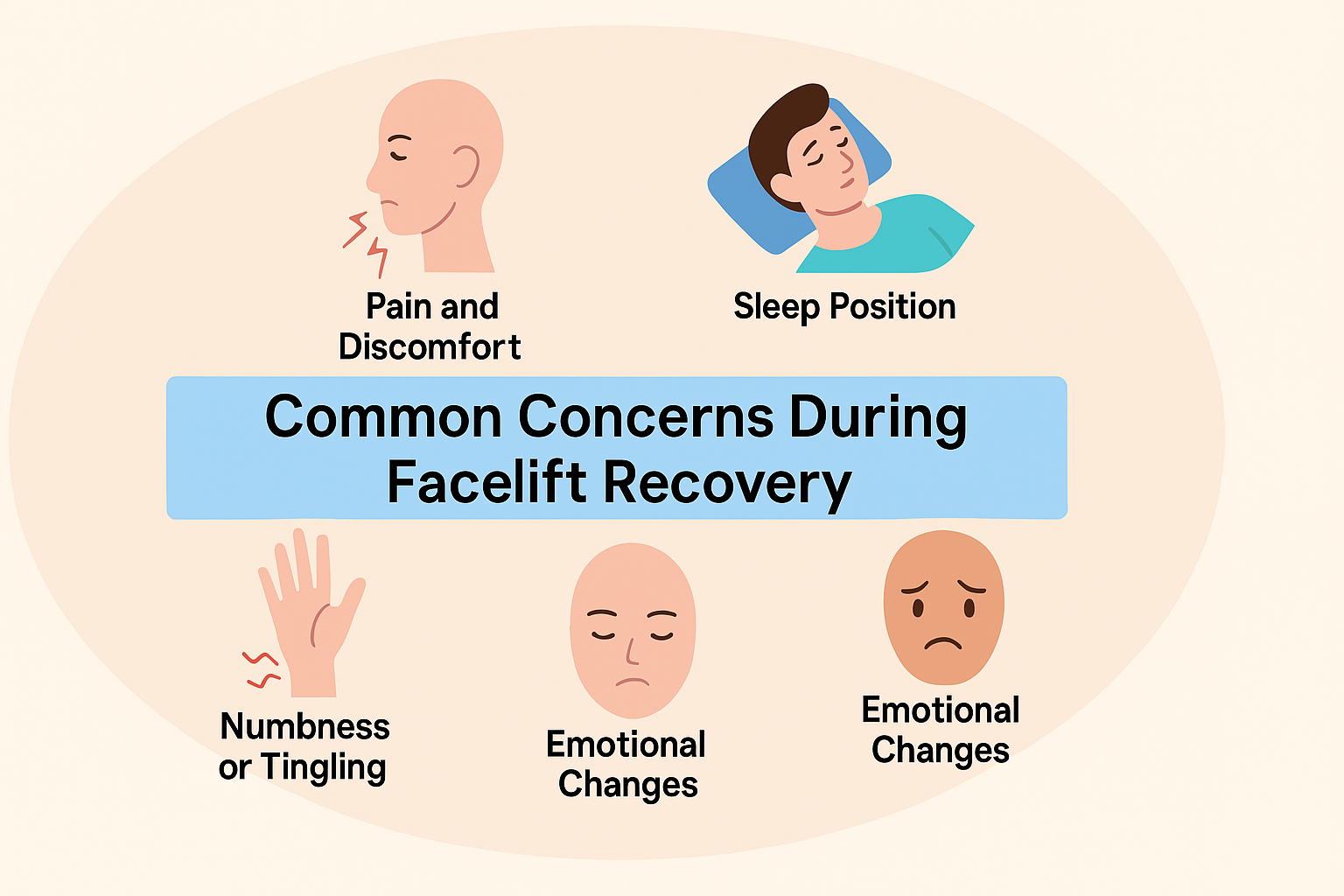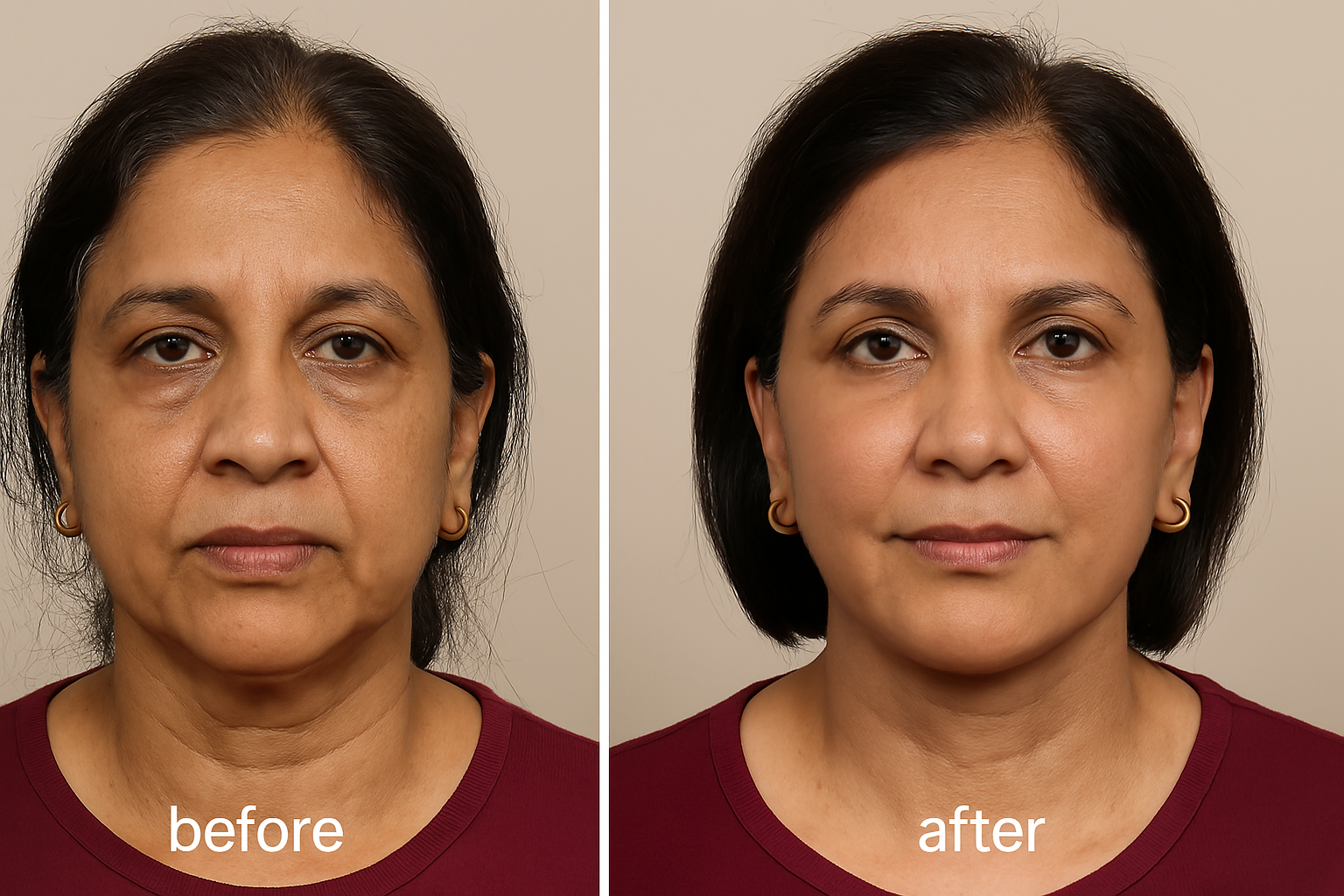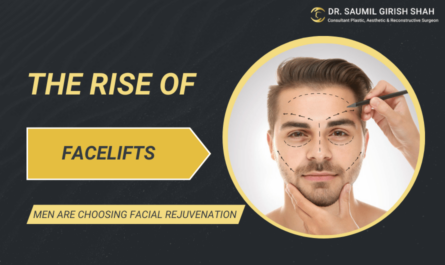Introduction
Undergoing a facelift is a major step toward achieving a more youthful, refreshed appearance. While the procedure itself is important, the recovery process plays an equally crucial role in ensuring the best possible results. Many patients are understandably concerned about what to expect after surgery and how to navigate the healing journey with minimal discomfort and maximum success.
New clinic data reveals a surprising statistic: male facelifts procedures have increased by 210% in the last decade. Ready to learn more about modern male rejuvenation? Visit our latest blog on Why Facelifts Have Become More Popular Among Men
In this blog, we’ll explore everything you need to know about facelift recovery—from understanding what it involves to practical tips for speeding up healing. Whether you’re planning your facelift or supporting a loved one through theirs, this guide offers expert-backed advice for a smooth recovery process.
Understanding Facelift Recovery: The Basics
A facelift, or rhytidectomy, is a cosmetic surgical procedure designed to reduce signs of aging by tightening sagging skin, lifting facial muscles, and improving the overall contour of the face and jawline. While results can be dramatic and long-lasting, healing is a gradual process that requires proper care and patience.

Key terms to know:
- Swelling and bruising: Common side effects that usually peak in the first week and gradually subside.
- Downtime: Most patients need at least 2-3 weeks before resuming regular activities.
- Scars: Incisions are typically made around the ears and hairline, and with proper care, scars fade significantly over time.
Knowing what to expect can reduce anxiety and help you prepare mentally and physically for your recovery journey.
Common Concerns During Facelift Recovery
Facelift recovery can vary from person to person, but there are several shared experiences and concerns:

- Pain and Discomfort: Mild pain or tightness is normal and manageable with prescribed medication. Most discomfort subsides within a few days.
- Swelling and Bruising: These are most noticeable in the first week post-surgery, especially around the cheeks, neck, and eyes. Using cold compresses and keeping your head elevated can help.
- Numbness or Tingling: Temporary loss of sensation in certain areas of the face is common. It usually resolves on its own over a few weeks to months.
- Sleep Position: Patients are often advised to sleep on their back with the head elevated for at least two weeks to minimize swelling and pressure on the face.
- Emotional Changes: It’s normal to experience a rollercoaster of emotions during recovery, especially in the early days when your appearance is changing and healing is ongoing.
Understanding these concerns helps set realistic expectations and encourages patients to stay committed to post-op instructions.
Facelift Recovery Tips: Best Practices for Healing

Proper post-operative care can significantly influence the speed and quality of your recovery. Here are some essential tips:
1. Follow Your Surgeon’s Instructions Carefully
Every facelift is unique, so it’s crucial to follow the personalized guidelines provided by your surgeon, including medication, wound care, and follow-up visits.
2. Keep the Area Clean and Dry
Avoid getting the surgical site wet for the first few days unless instructed otherwise. Use recommended antiseptic solutions if advised.
3. Stay Hydrated and Eat Nutritiously
A balanced diet rich in vitamins, protein, and antioxidants helps your body heal faster. Avoid salty foods which can worsen swelling.
4. Avoid Strenuous Activity
Give your body time to recover. Avoid heavy lifting, bending, and vigorous exercise for at least 2-3 weeks or as directed by your surgeon.
5. Protect Your Skin from the Sun
Sun exposure can cause pigmentation and delay healing. Use a broad-spectrum sunscreen and wear a wide-brimmed hat when outdoors.
6. Stay Positive and Patient
Facelift results evolve over weeks and months. Be kind to yourself during this time and avoid constantly checking for progress. Healing is not instantaneous, but the results are worth the wait.
Additional Tips from Experts
- Cold Compress Usage: Use cold packs for 10-15 minutes at a time during the first 48 hours to reduce swelling.
- Wear Compression Garments if Advised: These can help reduce swelling and support facial contours.
- Avoid Smoking and Alcohol: Both can impair circulation and delay healing, so it’s best to avoid them for at least a few weeks post-surgery.
- Journal Your Progress: Keeping a diary or taking photos every few days can help you see improvements you might not notice daily.
Meet Dr. Saumil Girish Shah
Dr. Saumil Girish Shah is recognized as one of the best plastic surgeons in Mumbai, Borivali, known for his expertise in both aesthetic and reconstructive surgery. He is board-certified and extensively trained, offering a wide range of surgical and non-surgical procedures tailored to enhance beauty and boost self-confidence.
Dr. Shah completed his MBBS at KEM Hospital and pursued General Surgery at M.S. University, followed by advanced training in Plastic Surgery at Sion Hospital, Mumbai. His specialization includes procedures for the body, breast, hair, face, and laser treatments, with a keen focus on natural, beautiful results.
To book a consultation with Dr. Saumil Girish Shah, visit Skinzone Aesthetics, located at:
403, Vini Elegance, Above Tanishq Jewellers, L.T. Road, Borivali West, Mumbai 400092.
Frequently Asked Questions (FAQs)
1. How long does it take to recover from a facelift?
Most patients can resume light activities in 10-14 days. Full healing and final results can take 2-3 months.
2. Will there be visible scars after a facelift?
Incisions are placed in discreet locations (around the ears and hairline). With time and proper care, scars fade significantly.
3. Is facelift recovery painful?
Mild pain, tightness, and discomfort are common in the initial days. These symptoms are manageable with prescribed medications.
4. Can I wash my face after surgery?
You can gently clean your face after a few days, following your surgeon’s guidance. Avoid scrubbing or using harsh products.
5. When can I wear makeup again?
Makeup is typically safe after 2-3 weeks, once the incisions are fully closed and the skin isn’t sensitive.
6. How can I reduce swelling after surgery?
Keep your head elevated, avoid salty foods, use cold compresses, and follow your doctor’s post-op care plan.
7. Is it normal to feel emotional after a facelift?
Yes, many patients go through emotional ups and downs during recovery. Patience and self-care are essential.
8. Can I fly or travel soon after a facelift?
It’s best to avoid travel for at least two weeks post-surgery. Always check with your surgeon before making any travel plans.
Conclusion
A facelift can be a transformative experience, enhancing not just your appearance but also your self-esteem. However, the success of your procedure depends heavily on how well you manage your recovery. By following your surgeon’s advice, taking care of your body, and being patient with the healing process, you can enjoy smooth recovery and stunning, long-lasting results.
If you’re considering a facelift, trust your journey to a qualified expert like Dr. Saumil Girish Shah. With professional support and the right care, you’ll be on your way to looking and feeling your best.



